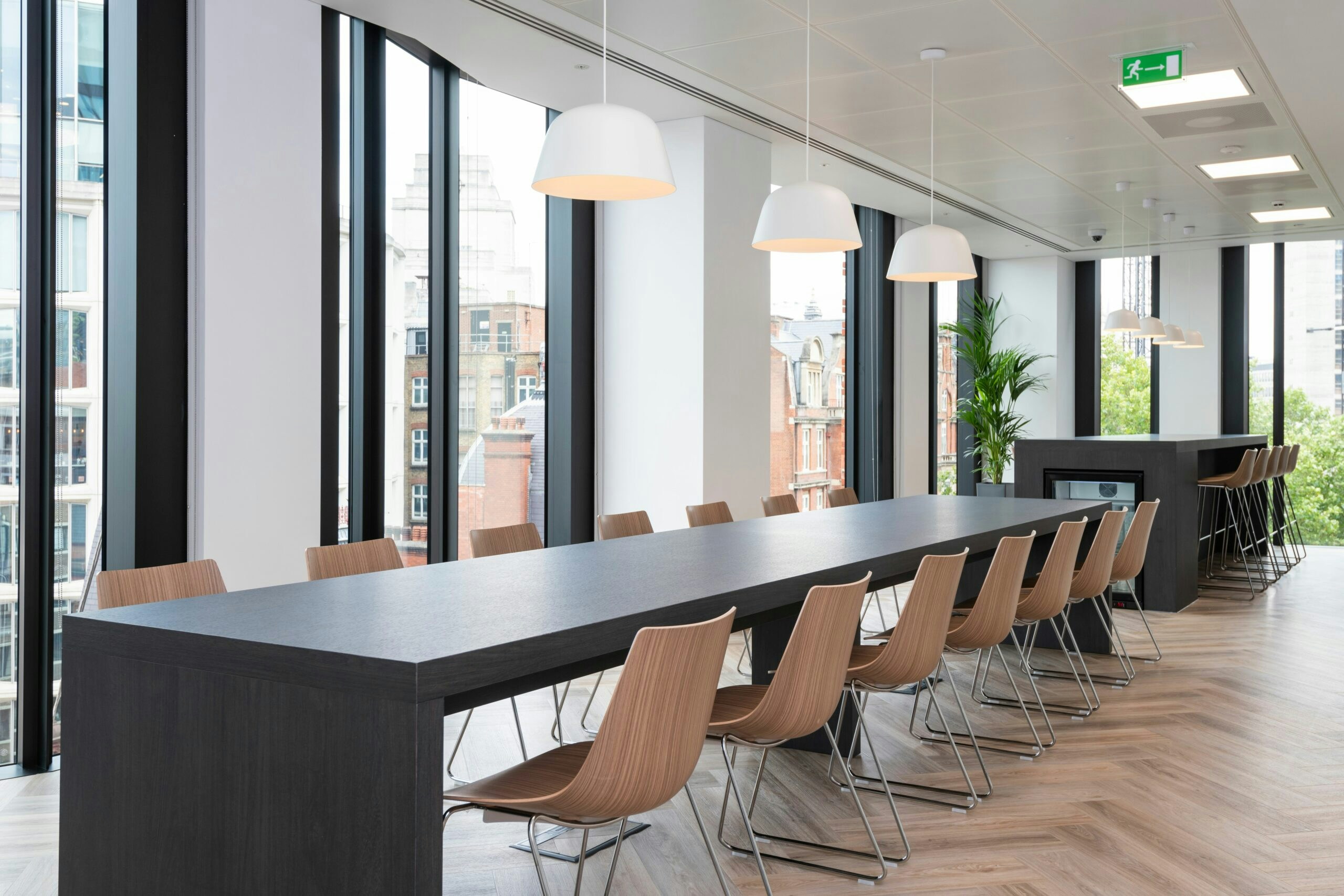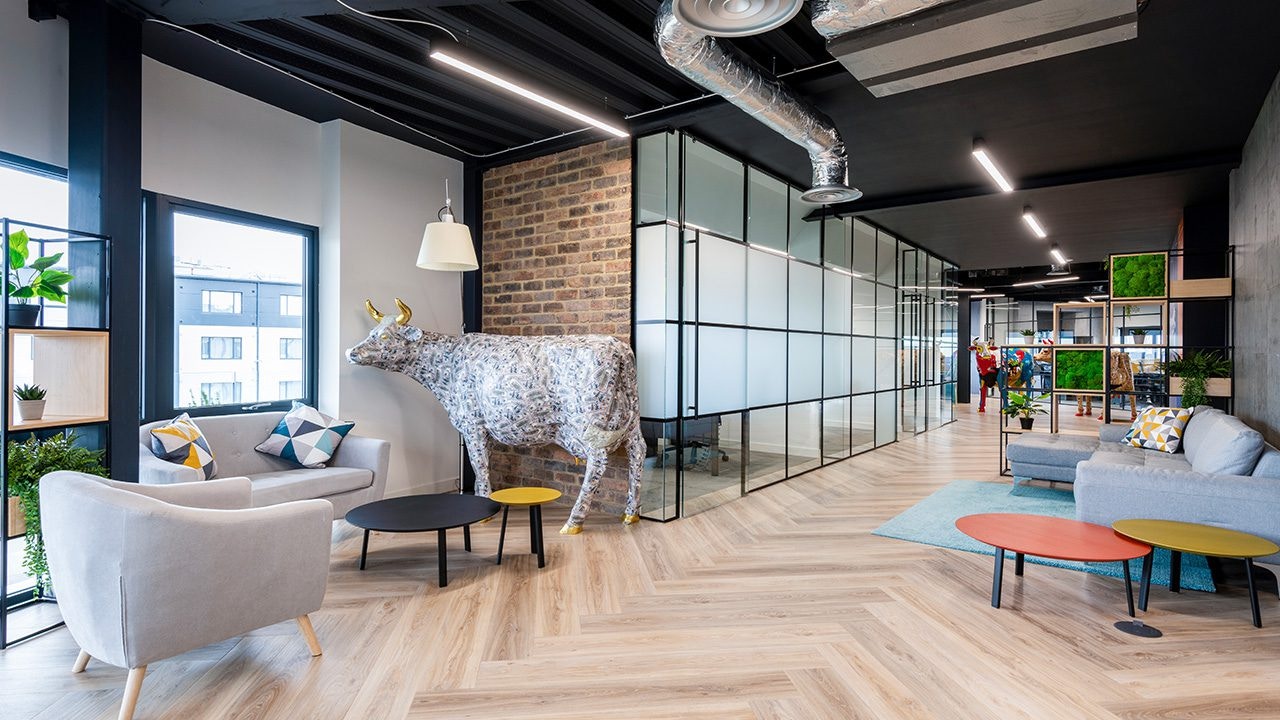With encouragement from employers and the rising costs of energy for home workers, the return to the office is escalating. Research by Envoy from 14,000 global locations shows a 64% increase in office foot traffic since the start of 2022. At the same time in the UK, there has been a decline in pure home working (remote working) and an uptick in hybrid working that balances working from home and working from the physical office. Current ONS figures show that pure home working has dropped 10% from February to May this year while hybrid working has increased 11% in the same period.


The Race for Office Space
To accommodate this new surge in employees working from the office, companies are now in a race to find office space. In fact, a new study by CBRE showed office take-up in Central London reached 12.7 million square feet in the 12 months to the end of June 2022. This is up 153%, compared to the same period last year, as well as being 5% above the ten-year average. Interestingly, for large office spaces (spaces above 20,000 sq ft.) occupiers are taking more space than previously occupied. As CBRE’s head of research puts it:
Despite an increase in hybrid working, demand for office space remains robust. The received wisdom is that hybrid working will significantly impact office demand. This data clearly challenges that narrative.
So what does this all mean for the design and build of the office spaces now in the years to come? Is it simply a return to the original office, or is there some more thinking needed around how the workplace is designed and built to accommodate hybrid and flexible working conditions? In this article, we explore the physical workplace and its strengths in more detail. Let’s start by examining five of the most significant benefits of working in an office.

1. A Sense of Purpose
Leaders have rightly been concerned about the impact of the last few years on company culture, cohesion, connectivity and brand identity. It’s people that make an office, but it’s the physicality of the office that asserts it. Without a physical office, a sense of common purpose is diminished. According to a Mckinsey study, 82% of employees felt that it’s important for their company to have a sense of purpose, and more than two-thirds of employees felt that their own sense of purpose was at least in part defined by their work.
To address the need for belonging, employees need to think about the physical office as an asset with a competitive advantage. They should be looking to design and build offices that are not simply filled with workstations, but rather spaces that foster human connection, authentic experiences, and an opportunity to bond with coworkers. Examples include;
- The creation of break-out areas that galvanise engagement and co-working opportunities
- the introduction of sofas and lounge areas for social meetings
- The use of benches and tables in touchdown spaces for collaborative working
- The introduction of plants (biophilia) that make an office an enticing place to work
- the creation of “third spaces” within the office, like coffee areas and bars

2. A Sense of Belonging
Belonging means a person has a strong sense of acceptance by, and participation in, a particular community or group. According to the Cambridge Dictionary, belonging is:
a feeling of being happy or comfortable as part of a particular group and having a good relationship with the other members of the group because they welcome you and accept you.
During the pandemic, belonging was eroded. Swathes of redundancies lowered morale, and new recruits who hadn’t yet met their colleagues in person had to do so virtually through Zoom, Slack and Teams. Socialising was limited to virtual chats and group calls, the so-called ‘virtual watercooler’ .
The office, in contrast, allows for much more fluidity and natural interaction in conversation – those “accidental collisions” that lead to new opportunities for belonging and friendships. That sense of belonging can be enhanced through office design. A good example of how this works in practice is a recent fit out we completed for DTRE. The company wanted to transform their office space into a completely different type of work environment, one that was as much about entertainment and enjoyment as it was about work. We worked closely with them to transform an empty white box, with raised floors, into an exquisite sub 11,000 square ft space that included:
- Open-plan workstations
- A gym/fitness area
- A client touchdown area
- A barista area also served as a reception area. This was an innovative break from the traditional reception area while modernising the whole concept of a standalone reception desk.
- A wine bar and dining room to entertain visitors
- Custom joinery for the reception area
- A presentation area with tiered bleacher seating, rather than separate seats
The project was carried out in accordance with BREEAM and the Considerate Constructors Scheme, which established strict guidelines for environmental, social, and governance (ESG) criteria. Our focus on sustainability also included reusing furniture from the previous office.

3. Friendship and personal connection
Interpersonal connections will naturally form when employees join your company and spend time in the workplace. However, job satisfaction skyrockets when one has close friends at work. According to a Gallup study, employees who have a best friend at work are more satisfied with their careers, more inclined to go above and beyond for clients, and more likely to deliver high-quality work. Their research shows that employees who have friendships at work are more than twice as likely to be engaged (63% vs. 29%) as those who don’t.
While friendships and personal connections can’t be manufactured, the type of office design and fit-out can encourage them. Having early conversations with a design and build firm can be very beneficial in establishing a workplace that supports a variety of work arrangements, as well as possibilities for teamwork, camaraderie, and friendship. It’s more involved than just grouping workstations together. The effectiveness of a team’s collaborative efforts is greatly impacted by the overall quality of an office’s design and layout.

4. Creativity and innovation
Working in an office allows for creativity and innovation. Increasingly, companies are coming to understand that the physical space where employees do their work is crucial to fostering creativity and innovation in the workplace.
Innovation is the successful exploitation of new ideas and the profitable outcome of the creative process. Importantly, innovation is not a solitary effort; rather, it requires the cooperation of many different departments and divisions within a company, as well as those of other related businesses
The structure and style of an office may have a significant impact on creativity and innovation. A basic decision like where different groups of people should sit could have a profound impact on the ability to share ideas, or which departments share ideas.
Changing the arrangement of desks, for instance, can have an effect on how freely workers contribute their ideas and knowledge. Similarly, breakout areas and communal workspaces may also be fertile ground for creative thinking. Working with a skilled project manager and office design team can assist in creating environments that encourage creativity, innovation and problem-solving.

5. Knowledge Sharing
Face-to-face conversations provide a unique opportunity to share knowledge in a way that can’t be communicated online. A quote from an interview with a career coach in the New York Times explains this succinctly:
“If a lot of decisions are made through side conversations, through walking up to someone’s office, through hallway conversations, recognise that despite how good you may be at emailing or Slack communications, you will be left out of conversations that happen organically in-office”
Knowledge is built on relationships – the things that people can see, hear, and experience in their immediate environment. Studies in sociology suggest that seeing others’ actions is crucial to acquiring new knowledge.
6. Collaboration and Teamwork Opportunities
Well-designed office space provides employees with opportunities to collaborate and work together, both formally and informally. This includes dedicated collaborative spaces such as meeting rooms and breakout areas, as well as less formal spaces such as shared workstations or communal areas. By creating opportunities for teamwork and collaboration, companies benefit from creativity, innovation, and a sense of community in the workplace. There are also added benefits of better problem-solving, increased job satisfaction, and ultimately greater success for a business.
Need Advice on Making the Most of Your Office Space?
Our team of office design experts and project managers are experts in helping companies make the most of their office space. We understand that the return to the office requires careful thought, and sometimes difficult decisions, and are here to help. We can support you with workplace consultancy, office design and space planning, mood boards and CAT B fit outs that apply the latest thinking and smart office technology for maximising the use of your office space and accommodating hybrid working.